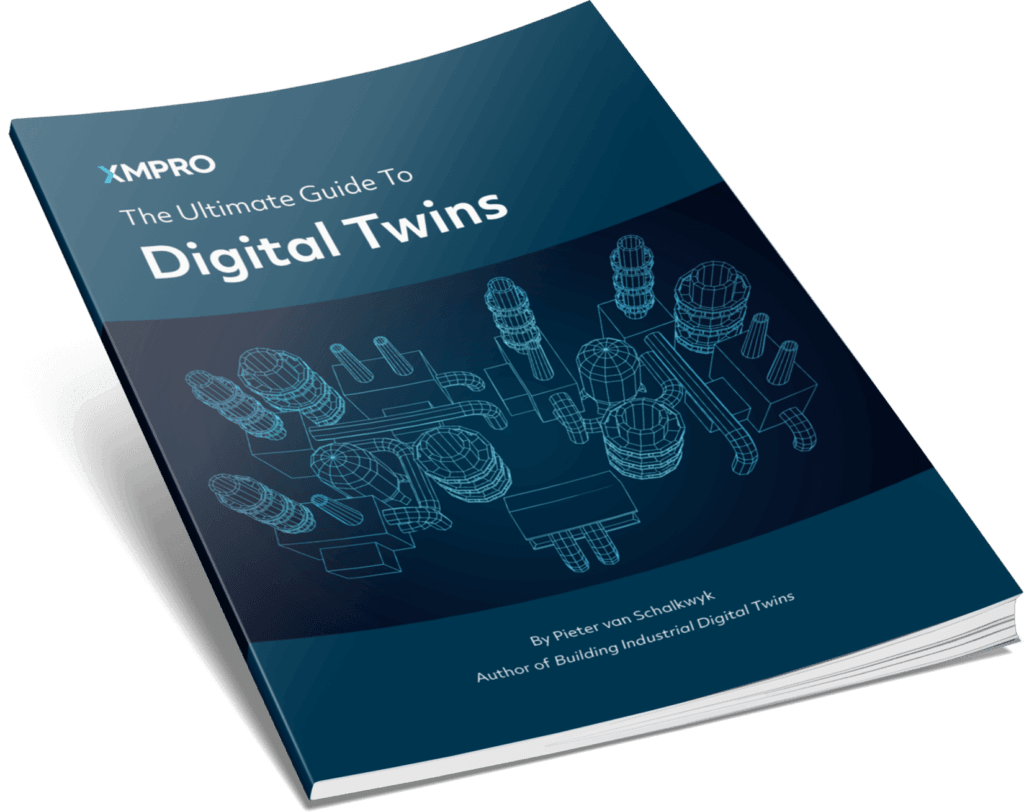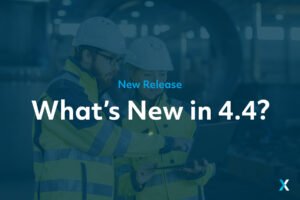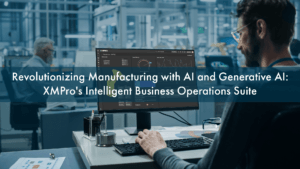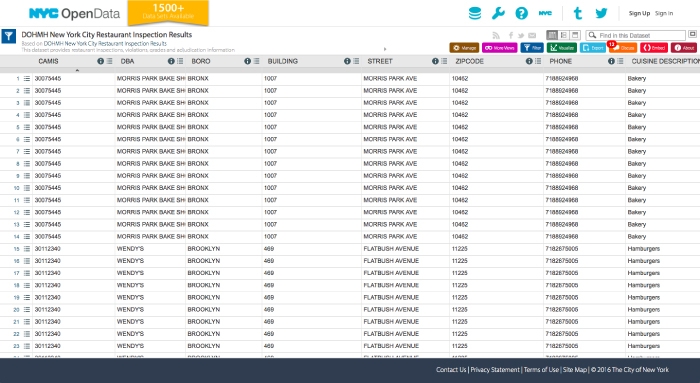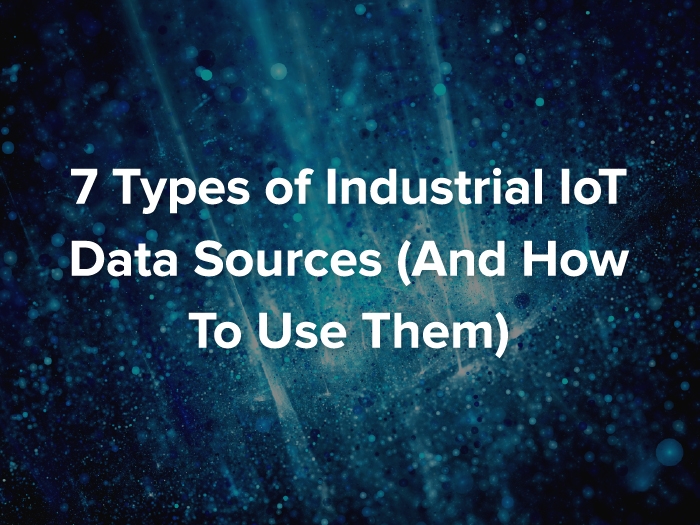
Where does industrial IoT data come from?
Most people would say it comes from assets like pumps, turbine engines and drilling rigs.
But there’s more to industrial IoT than machine data.
Machine data doesn’t tell a complete story in every case. By combining data from disparate sources you can create new insights. And give engineers a complete view of the problem they need to solve.
In this post, I’ll show you the 7 different types of data sources you can use to create IoT applications.
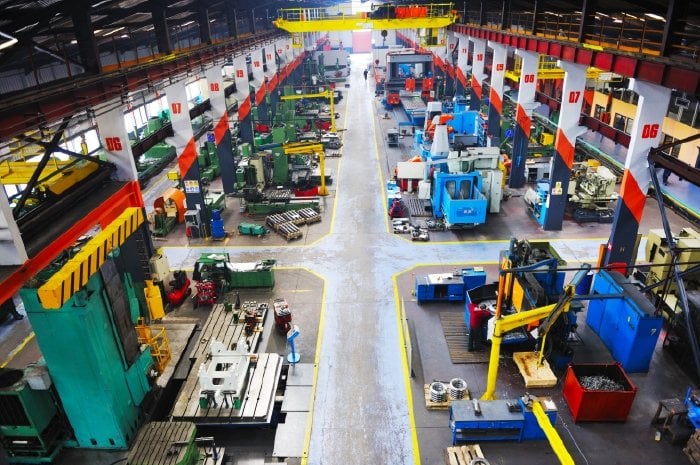
1. Industrial Control Systems
IoT makes it possible to leverage the data you already have in your SCADA system or historian.
A lot of companies we talk to have been gathering data in these systems for almost 30 years. But this data could only be used retrospectively until now.
Machine learning services like Cortana Analytics, SAP HANA and IBM Watson have opened the doors for IoT-based predictive maintenance.
By applying a machine learning algorithm to your SCADA data, you can predict a pump failure. Or determine the remaining useful life of a turbine engine.
If you already have a large volume of machine log data, machine learning will help you put that data to good use.
But knowing about an imminent failure isn’t enough. That’s why our IoT Application Suite has a strong focus on driving real-time actions.
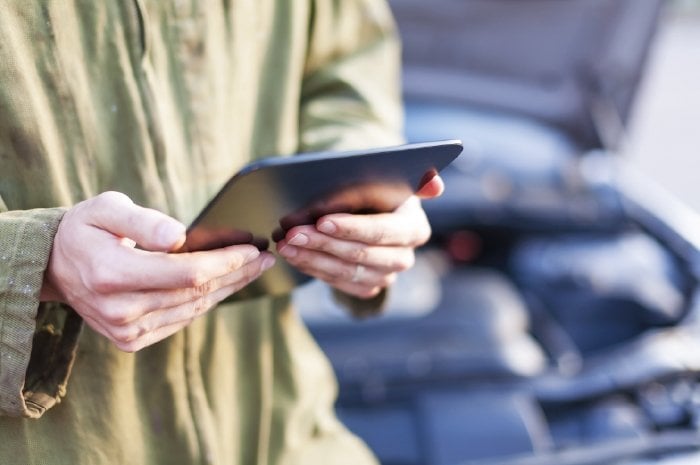
2. Business Applications
Data silos are still very common in industrial organizations. And this leads to missed opportunities because the data is already there. The right people just don’t have access to it when they need it.
Data from applications like your CRM, ERP or EAM can provide context that goes beyond what’s wrong with a machine.
IoT-enabled field service can dramatically improve customer experience. Giving technicians access to CRM data from their tablet shows them a detailed customer history. And they won’t have to call the office to answer the customer’s questions.
You can also build upon predictive maintenance with business data. When the machine learning algorithm predicts an asset failure you connect to your EAM system and check the warranty.
If the EAM data shows that the asset is still under warranty, you don’t send a maintenance crew. Instead, you can have it kick off a task for someone to call out the manufacturer to fix the problem.
By automatically checking the warranty, you can prevent compromising warranties and reduce maintenance costs.
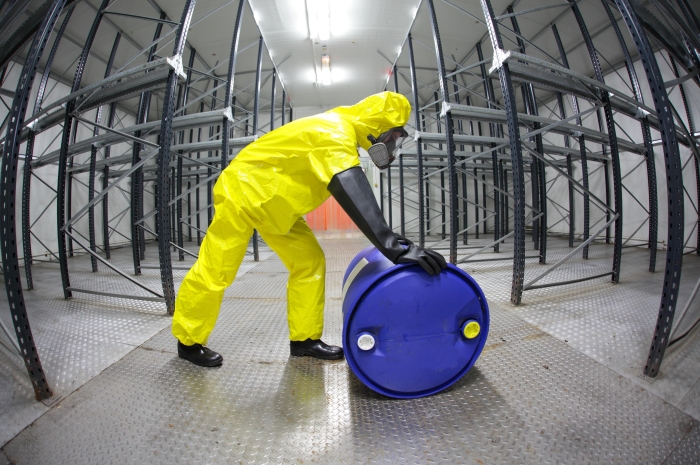
3. Wearables
Data from smart watches and fitness trackers aren’t as useful as machine data for IIoT. But there is a new breed of industrial wearables making a name for itself.
These new wearables promise to make difficult and often dangerous jobs safer and easier.
Data from wearable gas detection sensors can track employee exposure levels. That data can then be displayed alongside their work schedule. This helps dispatchers adjust the schedule based on the worker’s exposure. And ultimately it leads to fewer health issues.
Another wearable that’s gaining popularity with large mines and constructions companies is the SmartCap. The SmartCap was created to prevent accidents. It measures truck driver fatigue levels by monitoring their brain activity.
When it picks up driver fatigue, an alarm will trigger to stop the driver and also let their manager know of the event. The possibilities to use this data go even further than just sounding alarms.
If you have a lot of drivers, you can use machine learning to predict where and when they are likely to get tired. This also helps you improve schedules, routes and safety practices. You’ll know which times and areas are high risk for fatigue.
4. Sensors & Devices
Advances in sensor technology have made streaming real-time data easier than ever. Temperature, flow, pressure and humidity sensors have become big sources of industrial IoT data.
Sensors like this one from Libelium simplify remote water quality monitoring.
Process industries produce waste water that could contaminate drinking water if procedures aren’t followed. Contamination does damage to more than the environment. It often results in a PR disaster for the company responsible.
By monitoring water quality, you can respond to contamination faster than ever before.
But what if you could predict the contamination before it happened? That’s what the next type of data source is for.
5. Open & Web Data
What’s the most common example of using open and web data? It’s usually how to improve customer service by using social media posts. You employ a sentiment analysis algorithm and respond to negative posts quicker.
But in this post, we’re going to cover an industrial story that builds on the water contamination example.
Here’s how you can use web data to prevent waste water in effluent dams from overflowing and killing cows on the farm next door.
Using online weather services, you can predict when effluent dams are likely to overflow. Which means they are likely to contaminate water in the surrounding area.
Combine that with map data and you can also predict which specific reservoirs are in danger. This means you can take preemptive action and prevent the contamination from happening.
Open data sources aren’t limited to weather, traffic and maps. You can also use open data from places like the NYC Open Data project.
6. Media
Smartphones have made it possible to get real-time access to photos, videos and audio from the field. But in industrial cases, we can go beyond using smartphones to upload a picture of a broken machine.
One way to use media as a data source in oil and gas is to stream real-time infrared images when inspecting flare stacks. Flare systems need to be inspected regularly for fouling and corrosion.
By using a UAV to do the inspection, you can get information without interrupting operations. You also won’t be putting workers in danger.
Keep an eye out for a more in-depth use case we’ll be publishing about this soon.
7. Location
Location data could come from mobile devices, location beacons, GIS systems or even drones (UAV’s).
You could combine GPS data from a vehicle with traffic reports to optimize your delivery routes in real-time. Or you could place track-and-trace sensors on expensive mobile assets that often get stolen or misplaced.
But to prove how powerful the use of real-time location data can be, let’s take the example of avoiding accidents with mining vehicles.
Mining trucks accidents are often fatal. Like this accident in 2013, where a contractor’s Toyota Land Cruiser collided with a loaded dump truck weighing 380 tons.
Because the truck driver is seated in such an elevated position, it is often hard to see what’s happening directly in front of him.
Streaming real-time data from location beacons can help prevent fatal accidents like these. When a vehicle passes a beacon, the IoT application can automatically check whether the vehicle has the correct clearance certificate.
You can also add GPS data displays (similar to radars in aircraft) to show truck drivers where light vehicles are around them.
Conclusion
There’s more to industrial IoT than just using machine data for predictive maintenance.
By using and combining these 7 types of industrial IoT data sources, you can enable smarter decision making and faster responses across your organization.
You’ll see the results in your bottom line, customer happiness and your safety record.
















